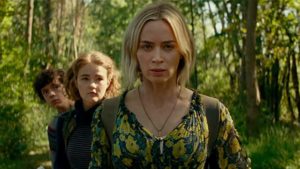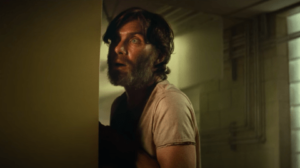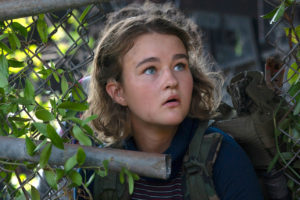"Waves" Goes the Wrong Direction in Racial Depiction, Despite Its Intent and Beauty
Spoiler Warning
Incluvie Foundation Gala - Learn More


After the 2018 surprising hit “A Quiet Place” brought something fresh to the horror genre, the announcement of a sequel may have been disappointing to some. A lot of the time, a sequel to an already successful movie is no where near as good as the original. Yet, John Krasinski once again shows that he is much more than Jim from “The Office.”
“A Quiet Place Part II” picks up right where the first one ended, with the remaining members of the family now having to leave the protection of the destroyed farm. They must venture out into the unsafe world, still aware that the accidental knocking over of a bottle could result to their deaths. Evelyn (Emily Blunt) has to worry about not only keep her kids Regan (Millicent Simmonds) and Marcus (Noah Jupe) alive, but also her knew born baby. The family cross paths with Emmett (Cillian Murphy) and they help each other trying to survive.

Emmett says, “The people that are left aren’t the kind worth saving.” This statement was in all the trailers and promotion for the movie, and is also an indication of what was to come.
It’s evident that Krasinski was given a much bigger budget for the second film, as the world is vastly expanded upon. Since it only focused on the family, the first film felt isolated and there was no need to explore more. The audience may have had thoughts about what was going on elsewhere, but it didn’t matter for the story being told. Going into the second, the filmmakers knew they had to acknowledge other communities surviving for it to work. They were able to make the world larger without putting to the side what made the first film work so well, which is the family. Whenever a new place is discovered, at least one member of the family is there to witness it. It wouldn’t be as effective if a whole community was found and the main characters were no where in sight. It’s rare to be as invested in a family as done in this film.
Yet, the investment in the characters could’ve dwindled if the performances were subpar. Luckily that’s not a problem for this film as all of the actors are as good as possible. Millicent Simmonds is basically the lead, and her being deaf in real life only enhances the emotions shown through her character as she’s a determined young woman. Emily Blunt and Cillian Murphy are seasoned actors who are always excellent and this is another display of their talent.

Of course, the biggest part of both the films is the use of sound. One of the trailers puts it in simple terms with the quote from a critic saying, “This is the experience theaters were made for.” The amount of time they put in with the sound mixing is a main reason why when the pandemic started, Krasinski decided not to release the film. In the first one, there couldn’t have been more than 30 lines of dialogue in the entire runtime. Everything was silent, and in most horror films those are the moments you should be scared, but it was the complete opposite. The silence built up the tension for whenever a loud noise was made. However in Part II, there’s much more dialogue than may have been expected, and that could’ve possibly taken away from what made the first one so unique. Yet, the dialogue was used wisely and sound was still the biggest factor. Noises were heightened, so the ringing of a bell or a door opening were louder than they are in most films, in order to not let the audience have time to relax.
Even with their being more dialogue, somehow they were able to make this film more tension filled than the first. The characters have very little time to rest, as the danger is more prevalent than before. The music playing whenever the monsters are chasing is some of the best you’ll ever hear in a horror film, as it builds upon itself, raising your heart rate while fearing for the characters.

It wouldn’t be hyperbole to say that “A Quiet Place Part II” is one of the best horror sequels ever made. It shows how talented the people in the sound department are, and the importance of their work to a films finished product. From top to bottom, everything came out just right and fit where it needed to be for Krasinski’s story.
Related lists created by the same author
Spoiler Warning
Related diversity category
This coming-of-age movie is about a group of girl trying to find their missing friend after a wild night none of them can remember.
Related movie/TV/List/Topic
The tragedy of Macbeth got Oscar nominations for Best Actor, Production design & cinematography. The Tragedy of Macbeth - Oscar film offers an etheric and atmospheric take on the reins cast on one of Shakespeare's most iconic poems.